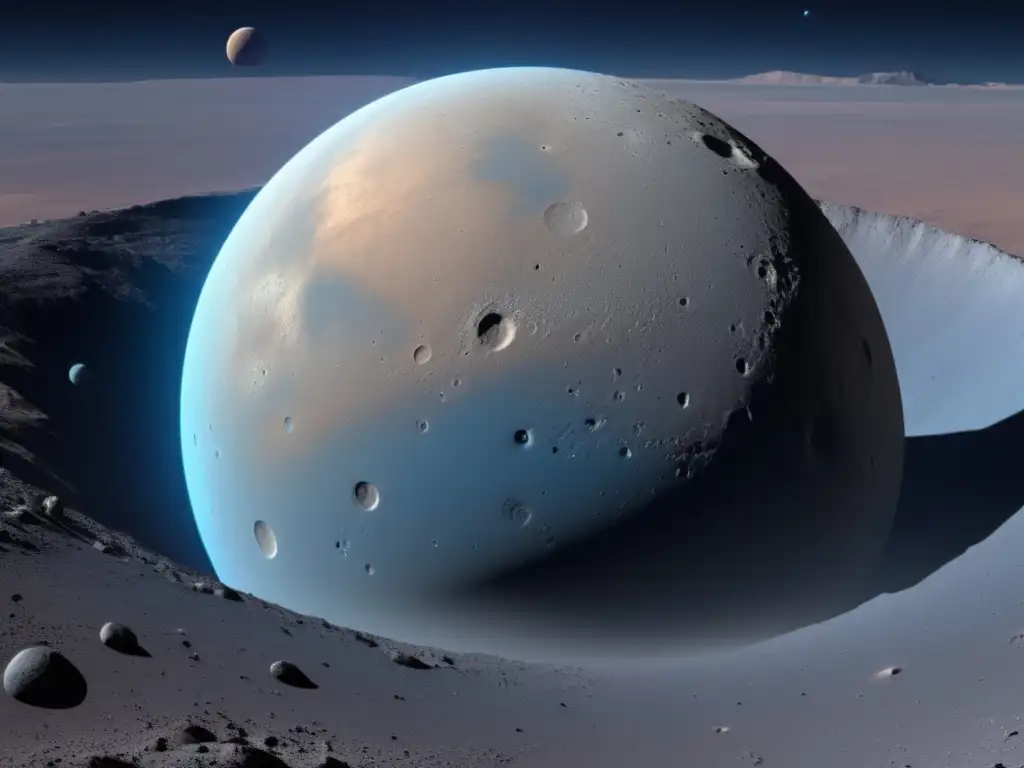Orcus: The Anti-Pluto And Its Role In The Kuiper Belt

Introduction
Orcus is a dwarf planet located in the Kuiper Belt, a region of our solar system that is beyond Neptune, comprising mainly icy objects. Orcus is considered one of the largest objects in the Kuiper Belt, with dimensions similar to those of Pluto. Astronomers discovered Orcus in 2004, and it has since then been a subject of intense study due to its unique properties and orbital characteristics.
The Discovery of Orcus

The Early Observations
Orcus was first observed on February 17, 2004, by a team of astronomers led by Michael E. Brown at the Palomar Observatory in California. The discovery was made using advanced telescopes that are capable of detecting faint and distant objects. The team used images that were acquired over several nights to confirm their observation.
The Naming of Orcus
The International Astronomical Union (IAU) officially named the dwarf planet Orcus after the Roman god of the underworld. This name is fitting because Orcus shares a similar orbit to Pluto and is considered an anti-Pluto object.
The Physical Characteristics of Orcus
After its discovery, astronomers have been studying Orcus's physical properties. They estimate that Orcus is approximately 1500 km in diameter, making it one of the largest objects in the Kuiper Belt. The dwarf planet has a thick and dense atmosphere made up of methane, nitrogen, and carbon monoxide. The surface of Orcus is covered in large craters and dark patches, which indicate possible volcanism or cryovolcanism.
Orcus's Orbit and Relationship with Pluto

The Resonant Orbit of Orcus
Orcus shares a unique resonant orbit with Neptune, which means that it takes the same amount of time for Neptune to orbit the Sun as it does for Orcus to orbit twice. This orbital configuration helps stabilize Orcus's path and prevents it from colliding with other objects in the Kuiper Belt.
Orcus and Pluto's Relationship
Orcus and Pluto have a unique relationship due to their similar sizes and orbits. They share a 2:3 resonance, which means that for every two orbits made by Orcus, Pluto makes three orbits around the Sun. This relationship makes the two dwarf planets' orbits highly elliptical and inclined to the plane of the solar system.
The Anti-Pluto Object
Orcus is often referred to as an anti-Pluto object because it orbits on the opposite side of the solar system from Pluto. Since Pluto was once considered the ninth planet, this makes Orcus the tenth planetoid in our solar system. However, due to its size, orbit, and characteristics, the IAU considers Orcus a dwarf planet.
Orcus's Significance in the Kuiper Belt

The Study of the Kuiper Belt
The Kuiper Belt is a region of our solar system that is relatively unexplored. Studying the objects in the Kuiper Belt can help us understand the formation of our solar system. Orcus is a critical object in the Kuiper Belt because it has properties and characteristics that are similar to those of other dwarf planets in the region.
The Search for Other Objects
Scientists continue to search for other objects similar to Orcus in the Kuiper Belt. Studying these objects can help us understand the processes that formed our solar system and how it evolved over time.
Possible Missions to Orcus
Despite being a dwarf planet, Orcus has unique properties that make it an interesting target for future space missions. These missions can help us gather more information about Orcus's composition, atmosphere, and surface features. Several proposed missions include flybys and orbiters that could further our understanding of this fascinating object in the Kuiper Belt.
Frequently Asked Questions

-
What is Orcus?
Orcus is a dwarf planet located in the Kuiper Belt, beyond Neptune, which shares a resonant orbit with Neptune and is often referred to as the Anti-Pluto.
-
How was Orcus discovered?
Orcus was first observed on February 17, 2004, by a team of astronomers led by Michael E. Brown at the Palomar Observatory in California.
-
What is Orcus's relationship with Pluto?
Orcus and Pluto share a 2:3 resonance, which makes their orbits highly elliptical and inclined to the plane of the solar system.
-
Why is Orcus significant?
Orcus is significant because it has unique properties and characteristics that can help us understand the formation and evolution of our solar system.
-
Are there any proposed missions to Orcus?
Yes, several proposed missions include flybys and orbiters that could further our understanding of this fascinating object in the Kuiper Belt.
Conclusion
Orcus is a critical object in the Kuiper Belt, with unique properties and characteristics that make it an important target for future space missions. Its resonant orbit with Neptune and relationship with Pluto make it an interesting study for astronomers and scientists seeking to understand our solar system better. As we continue to explore and study the Kuiper Belt, we will undoubtedly learn more about Orcus and its role in the formation and evolution of our solar system.
Please feel free to share your thoughts on Orcus and any related topics in the comments section below.
Additional Resources

For further reading on Orcus, the Kuiper Belt, and other related topics, please refer to the following resources:
- NASA's Orcus In-Depth Overview
- Space.com's Kuiper Belt Overview
- Sky and Telescope's Proposed Missions to Orcus and Salacia
 A Deep Look Into Astraea: The Fifth Asteroid To Be Discovered
A Deep Look Into Astraea: The Fifth Asteroid To Be Discovered Davida: Exploring One Of The Largest Inhabitants Of The Asteroid Belt
Davida: Exploring One Of The Largest Inhabitants Of The Asteroid Belt The Secrets Of Lutetia: A Profile Of A Large Asteroid In The Main Belt
The Secrets Of Lutetia: A Profile Of A Large Asteroid In The Main BeltIf you want to discover more articles similar to Orcus: The Anti-Pluto And Its Role In The Kuiper Belt, you can visit the Asteroid Profiles category.
Leave a Reply

Articulos relacionados: